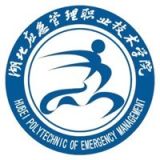如何确定职业病诊断的诊断标准如何确定?

Answer:
1. Clinical Presentation:
- Thorough history taking to gather symptoms, medical history, and psychosocial factors.
- Physical examination to assess for physical signs and symptoms related to the suspected disease.
2. Laboratory Investigations:
- Blood tests, urine tests, stool tests, and imaging studies to collect biological samples for analysis.
- These tests can provide evidence of underlying diseases, biomarkers, or abnormalities that suggest a specific diagnosis.
3. Physical Examination:
- Physical examination is an essential component of diagnosis, focusing on assessing physical signs and symptoms associated with the condition.
- Physical examination findings can provide clues about the underlying cause and severity of the disease.
4. Diagnostic Criteria:
- There are established diagnostic criteria, such as the American College of Chest Physicians (ACCP) Chest Disease Guidelines, that provide guidelines for diagnosing various pulmonary diseases.
- These criteria include specific clinical presentations, laboratory findings, and imaging results that are used to make a diagnosis.
5. Differential Diagnosis:
- Differential diagnosis involves considering other possible causes of the symptoms and conditions being investigated.
- This process helps to narrow down the possibilities and identify the most likely diagnosis.
6. Diagnostic Confirmation:
- Once a diagnosis is established, further diagnostic tests may be performed to confirm the diagnosis and rule out alternative conditions.
- These tests may include additional imaging studies, biopsies, or laboratory tests.
7. Ongoing Monitoring:
- After a diagnosis is made, patients may require ongoing monitoring to assess disease progression, response to treatment, and potential complications.
- Regular follow-up appointments and check-ups are essential for monitoring disease activity and adjusting treatment plans as needed.














































































































![出版专业职业资格考试的初级辅导书和中级辅导书有什么区别吗?区别大吗?看着名字都一样,取得出版专业初级职业资格者,可以聘任( )职务。[2008年真题] 出版专业职业资格考试的初级辅导书和中级辅导书有什么区别吗?区别大吗?看着名字都一样,取得出版专业初级职业资格者,可以聘任( )职务。[2008年真题]](https://www.cdmbedu.com/cache/s/images/2023-02/28a7DuTPjGErwaTCxrY8Mk23DNznigo2.jpg)




